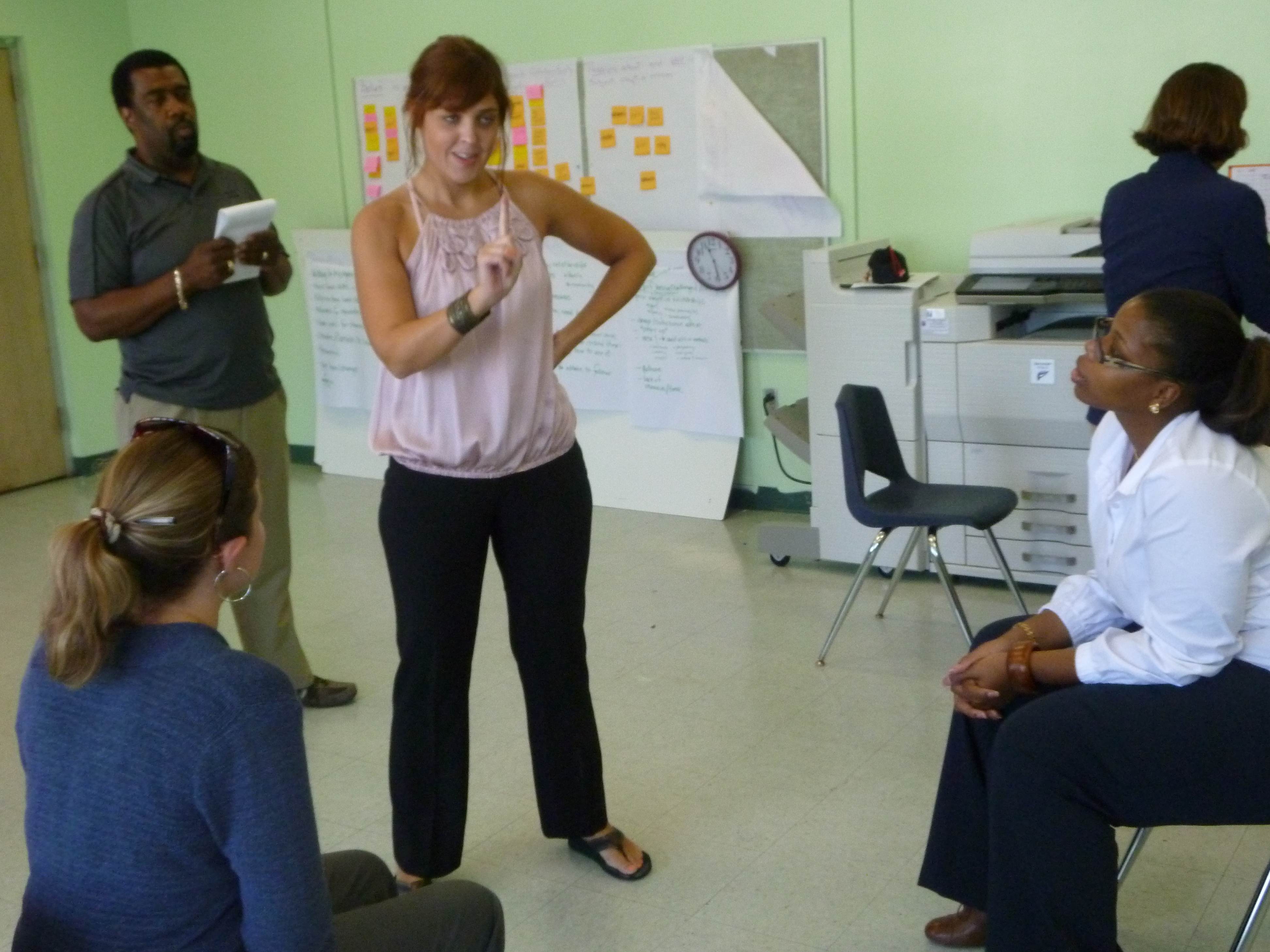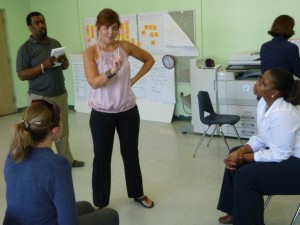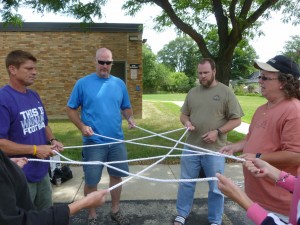
Nov 21, 2012 Co-Facilitation
Many of us who work as facilitators or trainers often work alone. We develop our own favorite activities, methods, and styles, and we are often most comfortable as the leader or guide. The irony in group facilitation is that many of us who take on this role are quite comfortable leading and planning on our own-and even prefer it, despite the fact we are working with teams. We often find it challenging to lead with others. Facilitators can be reticent about sharing creative license, communicating our goals/objectives, or letting go of control of the “plan for the day.”
 Those whose work requires that they lead groups with other people often share that co-facilitation is one of the most challenging aspects of their jobs, but also the most beneficial and rewarding. There are times when I have been reluctant to co-facilitate because of a possible difference in style, philosophy, or methods with my co-leader, or simply because it takes time and energy to plan and communicate with someone else rather than keep it in my own head. But ah…isn’t practicing compromise, communication, and coordination with others what we are trying to facilitate with our clients?
Those whose work requires that they lead groups with other people often share that co-facilitation is one of the most challenging aspects of their jobs, but also the most beneficial and rewarding. There are times when I have been reluctant to co-facilitate because of a possible difference in style, philosophy, or methods with my co-leader, or simply because it takes time and energy to plan and communicate with someone else rather than keep it in my own head. But ah…isn’t practicing compromise, communication, and coordination with others what we are trying to facilitate with our clients?
There is a saying “We teach what we need to learn” attributed to Richard Bach. When you have to explain your ideas and plans with someone else, it helps you reflect on your rationale and provide insight into your practice as an educator. This reflection pushes us to look at our strengths and weaknesses while articulating our methods. It begins a co-creative process that can be incredibly rewarding for both facilitators.
 I’ve learned many of my favorite activities, methods for introductions, and fun stylistic twists from other facilitators. Working out plans and differences in philosophy and approach, though at times challenging, has been incredibly rewarding and definitely has improved my practice.
I’ve learned many of my favorite activities, methods for introductions, and fun stylistic twists from other facilitators. Working out plans and differences in philosophy and approach, though at times challenging, has been incredibly rewarding and definitely has improved my practice.
Our relationships with the people we work with inform our work in group facilitation. The reflection involved in articulating our philosophy, methods and rationale while accepting someone else’s helps us become better facilitators and have more empathy around the process we are guiding.
Facilitators who work alone could find creating opportunities for collaborative work beneficial. People who work alone often get stuck in a rut relying on only their view of the world. If you are someone who does not have opportunities to co-lead groups in your daily practice, try to create those opportunities by co-leading a conference presentation or by co-facilitating an in-service with another staff person.
Participants benefit from the combination of two or more teaching styles. Facilitators are often more effective as a team and more able to capture the teachable moments that arise in group facilitation. The varying strengths and perspectives that each facilitator brings to the group can make the experience more interesting and rewarding. By opening ourselves to working with others, we are creating a richer experience and in many ways being “truer” to the concept of interactive group work. When we co-facilitate well, we model to the group the value of collaboration and teach effective teamwork by example.
It is important for co-facilitators to take time to reflect together after a group experience. Journaling and keeping a record of activities helps co-leaders plan, organize, and follow up together. Reflecting afterward, in an atmosphere were one can safely celebrate successes, and communicate concerns and frustrations, helps enhance collaborative work.
Reference: Tips & Tools: The Art of Experiential Group Facilitation by Jennifer Stanchfield. 2007. Wood ‘N Barnes Publishing Bethany, Oklahoma.



No Comments